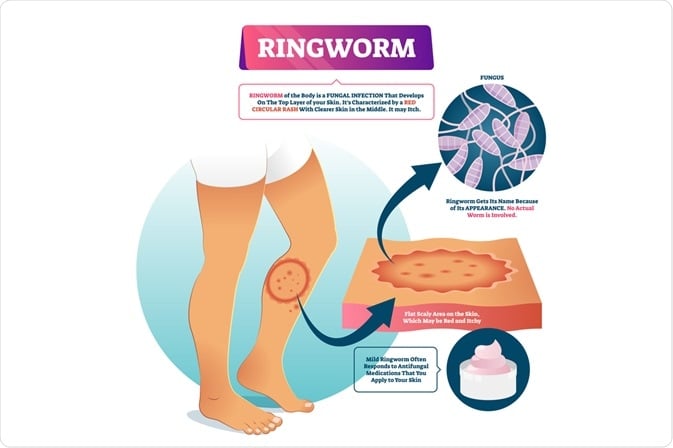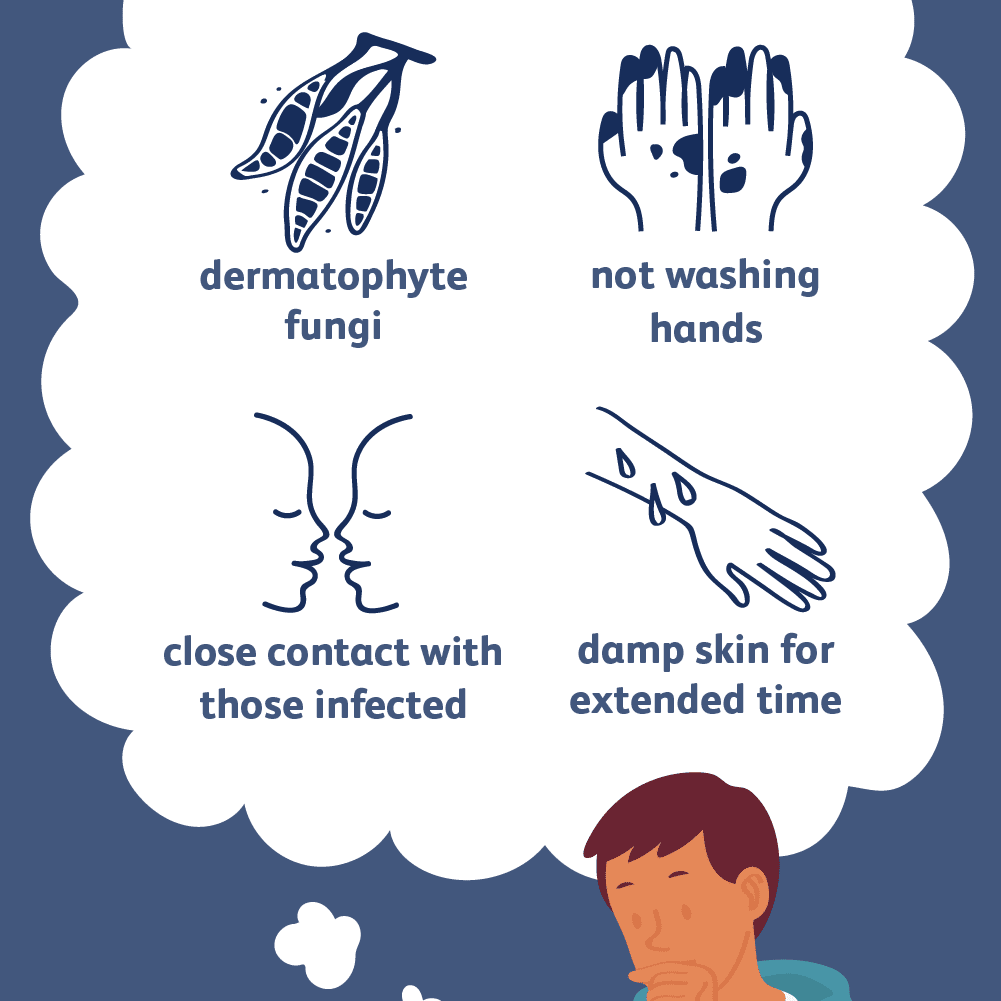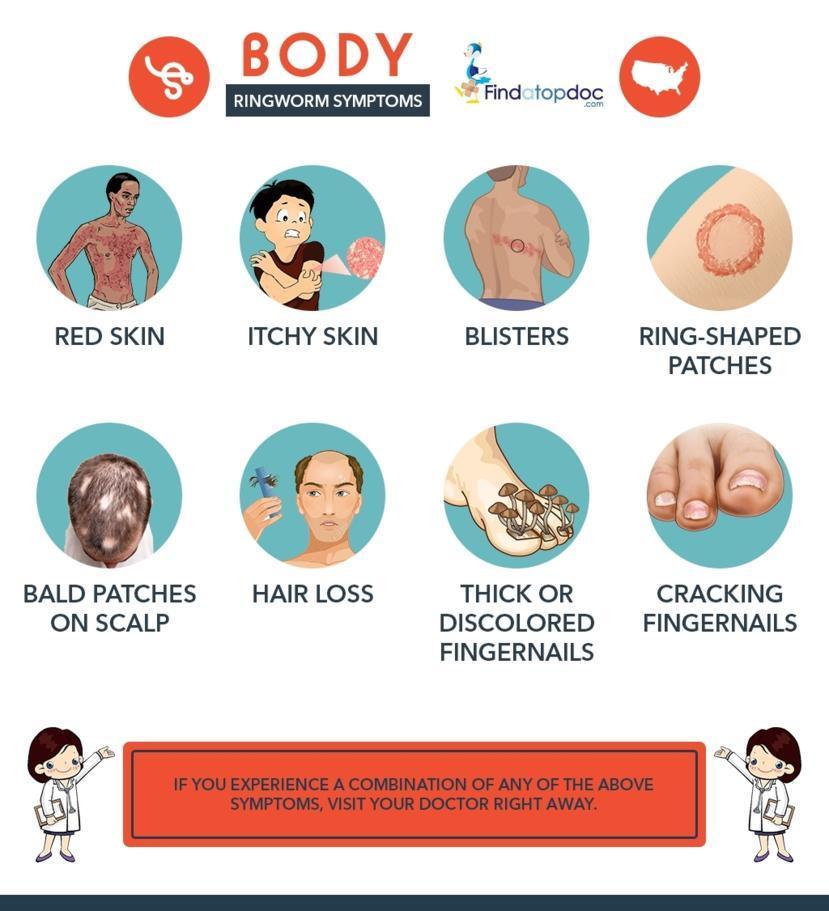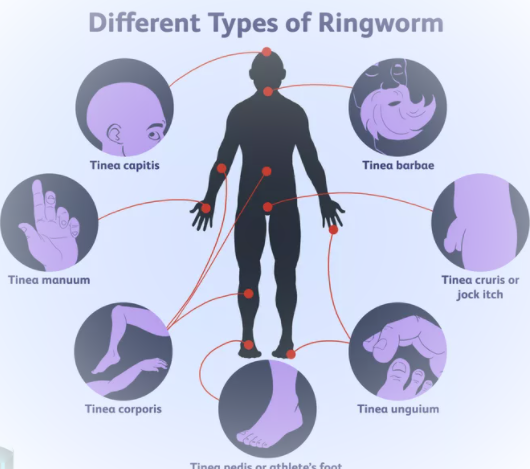Ringworm
What is a Ringworm? Ringworm is an infection on the skin caused by a fungus. Ringworm is known by other terms like tinea, dermatophytosis, or dermatophyte infection. However, unlike the name suggests, ringworm is not caused by a worm but by a fungus. When an individual is infected, the part of the body appears in… Read More
Top Doctors For Ringworm Treatments
Top Hospitals For Ringworm Treatments
Ringworm
Table of contents
What is a Ringworm?
Ringworm is an infection on the skin caused by a fungus. Ringworm is known by other terms like tinea, dermatophytosis, or dermatophyte infection. However, unlike the name suggests, ringworm is not caused by a worm but by a fungus. When an individual is infected, the part of the body appears in the shape of a ring that seems to resemble a worm.
Ringworm can affect humans as well as animals. It is contagious and can be spread by coming in contact with an infected individual, animal, or object or by sharing items with an infected individual. The infection can be located on several body parts such as the feet, groin, arms, etc. At the initial stage of the infection, the lesion is seen as a red or brown-grey discoloration and a scaly patch.

What are the most common causes?

According to the Centers for Disease Control and Prevention, about 40 species of fungi have been identified to cause ringworm. The genera of fungi that cause ringworm are Trichophyton, Microsporum, and Epidermophyton. They can inhibit the skin and other surfaces.
How is Ringworm spread?
There are four major ways in which ringworm can be spread.
- Spread from one human to another human – An uninfected individual can be infected by contacting or sharing personal items with another individual infected with ringworm.
- Spread from animal to human – Ringworm infection can be spread from affected animals such as cats, dogs, and other animals such as farm animals. When an uninfected individual comes in contact with an infected animal or items that have touched such an animal, the individual can get a ringworm infection.
- Spread from object to human – Certain objects, especially damp ones, can serve as carriers of fungi that cause ringworm. When humans touch these objects, they can get infected.
- Spread from soil to humans – The soil can be an inhabitant of these fungi, and when animals and humans touch the soil, they become infected.
What are the most common symptoms associated with ringworm?

Picture Courtesy: topdoc
The location of a ringworm infection determines the type of symptoms experienced. Common symptoms of a skin infection include:
- scaly discolored patches or plaques seen as raised areas,
- itchiness,
- hair loss,
- rings overlapping,
- rings on the skin that are slightly raised and may keep expanding,
- defined and raised edgy patches,
- round, flat patches of itchy skin,
- ring-like patches having a deeper color outside, etc.
Depending on the location of the injury, the ringworm is called different names, and the symptoms may vary. The table below highlights the parts of the body that can be affected.

| Affected Body Part | Name | Possible Symptoms |
| Beard (affects the cheeks, chin, upper neck) | Tinea barbae | ● Bald patches ● Resembles acne, folliculitis or any other skin condition ● Fatigue or swollen lymph nodes |
| Feet | Tinea pedis (Athlete’s foot) | ● Begins as dry scaly skin between the toes ● Itchy, stinging or burning sensation ● Blistering ● Foul -smelling ● Peeling |
| Groin or buttocks or inner thighs (Common in adolescent boys and men) | Tinea cruris (Jock itch) | ● Begins as an itchy red, brown, or gray rash |
| Hands | Tinea manuum | ● Resembles dry skin with deep cracks on the palm ● When it spreads, it appears on the back of the hand as ring-shaped patches |
| Toenails or fingernails | Tinea unguium (Onychomycosis) | ● Nails affected can become thicker or discolored ● Nails may crack or lift away from the nail bed |
| Other parts of the body (arms or legs) | Tinea corporis | ● Patchy skin ● Characteristic round ring shape on the limbs or torso |
| Scalp | Tinea capitis | ● Begins as an isolated scaling ● Gradually develops into itchy, scaly bald patches ● Hair loss ● Bald patches |
Tinea manuum can be caused when an individual touches an affected part of the body. Tinea pedis mostly infect individuals who walk around barefoot in public places where the infection can be transmitted, e.g. swimming pools, locker rooms, etc.
How is it diagnosed?

By examining an individual’s skin, the doctor will be able to make a diagnosis with the use of a black light to take a look at the infected area. When viewed under the black light, the infected area will glow depending on the fungus that caused the infection.
Confirmatory tests may also be conducted.
- Skin Biopsy or Fungal Culture – A discharge from the blister or a skin sample is taken and tested for fungus presence.
- Potassium Hydroxide (KOH) Exam – A portion of the affected skin is scraped off and sent to the lab.
How is ringworm treated?
For effective treatment, the doctor will prescribe medications and advise the individual to make lifestyle changes.
- Medications – The medication prescribed by a doctor depends on how severe the infection is. Over-the-counter (O-T-C) medications and antifungal skin creams which contain clotrimazole, miconazole, terbinafine, or any other related ingredients may be recommended by a doctor. Topical medications like creams, gels, sprays, and ointments can be used to treat ringworm in the feet, groin, and body. More severe cases of infection would require oral medications. Griseofulvin (Gris-PEG) or terbinafine are examples of prescription-strength oral medications recommended for treating scalp or nail ringworm.
- Lifestyle Changes – Several lifestyle changes that can help an individual take care of a ringworm infection include:
- ensuring that the body is thoroughly dry,
- avoid wearing tight clothing on the affected area,
- effectively treating the affected areas to avoid recurrence, especially ringworm of the feet,
- Regularly washing one’s clothing and bedding.
- Home Remedies – Before the antifungal medications were made, individuals used home remedies to treat ringworm. Caution should be taken if an individual is considering using any home remedy. It is best to seek professional advice from a doctor on the best treatment option.
- The application of coconut oil can help decrease infection.
- When applied to the affected area, Apple cider vinegar can also help with ringworm infection.
- Another home remedy used to treat ringworm infections is turmeric. A paste is made by mixing the spice with water, and then it is left to dry after being applied to the skin.
What are the stages of ringworm?
The symptoms of ringworm do not become visible to the infected individual until about 2 weeks after contracting the fungal infection. Ringworm occurs in two stages – the initial and second stages.
The initial stage of the infection appears as discolored, patchy skin that often gives an irritating feeling. At other times it may not appear like ringworm but is very dry and scaly. In the second stage of the fungal infection, the lesion will increase in size. Surrounded by a scaly area, the center of the rash would look like healthy skin.
Ringworm Versus Other Similar Infections
Ringworm has been likened to other skin conductions such as eczema and psoriasis.
- Ringworm and Eczema – The skin conditions of the ringworm and nummular eczema have been linked to each other based on their appearance. They may look so much alike that only a test on a skin sample can confirm which an individual has been infected. The two conditions look like round or coin-based lesions on the skin, and they can be scaly and cause itching.
Some differences between ringworm and nummular eczema:
- An individual with nummular eczema has more ring-like patches than an individual infected with ringworm.
- An area of skin affected with ringworm shows normal-looking skin at the center, but a skin area affected with nummular eczema does not.
- Ringworm and Psoriasis – Another skin condition that can look like ringworm is psoriasis. It is a condition caused by a dysfunction in the immune system. It can result in inflammatory plaques on the skin of an individual. Depending on an individual’s complexion, psoriasis can appear as pink plaques with white scales or purple patches with gray scales.
Ringworm and psoriasis can result in scaly, itchy skin with discolored patches. However, they have different underlying causes. While a fungus causes ringworm, psoriasis is caused by immune dysfunction. Plaque psoriasis causes larger skin lesions than ringworm and can also appear on areas of the skin than ringworm. Unlike ringworm which shows a clearing at the center of an infected skin area, psoriasis does not.
What are the most common complications caused by ringworm?
Ringworm is a contagious fungal infection that can spread to other skin parts if not treated immediately. It can also be transmitted to other people when they contact the infected individual. Ringworm can cause some other complications such as:
- hair loss (sometimes permanent),
- deformities of the nails,
- dark marks on the skin,
- secondary infection, etc.
Can ringworm be prevented?
- A major way of preventing ringworm is by maintaining good personal hygiene.
- Always wash your hands with soap and water.
- Keep the skin clean and dry.
- An individual should always wash their hands after touching an animal.
- Always disinfect and clean the living areas of pets.
- Keep sports uniform and shoes clean and dry if into sports.
- Avoid contact with ringworm-infected individuals.
- Avoid sharing personal items with individuals infected with ringworm.
- Always wear shoes when walking or showering in public places.
- When a pet owner notices that their pet has a ringworm infection, the pet should be taken to the veterinarian immediately.
Ringworm is a contagious skin condition caused by a fungus. If not treated on time, it can spread to other parts of the body’s skin. It appears like a ring-shaped rash that can make the skin scaly and itchy. It can also lead to some complications, such as hair loss.
Once diagnosed, the doctor will recommend medications to help prevent the incidence of the infection. In addition, ringworm can be prevented by not getting in direct contact with infected individuals and avoiding sharing items with them. Some lifestyle adjustments, such as keeping the skin dry and washing the hands regularly, can also help prevent ringworm infection.

































































